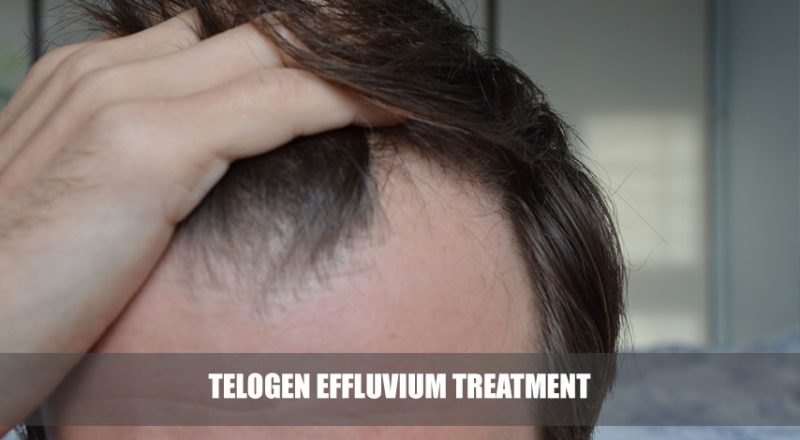Are you experiencing excessive hair shedding and wondering what could be the cause? If so, you might be dealing with a common hair loss condition called telogen effluvium. In this comprehensive guide, we’ll delve into the different aspects of telogen effluvium, including its types, causes, treatment options, and regrowth strategies. Whether you’re a man or a woman, understanding this condition and exploring potential remedies will help you take control of your hair health.
I. Telogen Effluvium: An Overview Telogen effluvium refers to a temporary hair loss condition characterized by excessive shedding of hair. It occurs when a significant number of hair follicles enter the telogen (resting) phase simultaneously, leading to more hair loss than usual. Let’s explore some key aspects of this condition:
- Telogen Phase:
- The hair growth cycle consists of three phases: anagen (growth), catagen (transition), and telogen (resting).
- The telogen phase typically lasts for 2 to 4 months before hair falls out and new hair begins to grow.
- Telogen effluvium disrupts this cycle, causing a higher number of hairs to enter the resting phase simultaneously.
II. Types of Telogen Effluvium Telogen effluvium can be categorized into two main types based on the duration of the condition:
- Acute Telogen Effluvium:
- Acute telogen effluvium is a temporary form of hair loss that occurs suddenly due to various triggers.
- Common triggers include surgery, childbirth, emotional stress, severe illness, or nutritional deficiencies.
- Hair shedding usually starts around 1 to 3 months after the triggering event and lasts for about 6 months before hair growth resumes.
- Chronic Telogen Effluvium:
- Chronic telogen effluvium is a long-term condition characterized by persistent or recurrent hair shedding for over six months.
- It often affects women and can be associated with hormonal imbalances, thyroid disorders, or underlying medical conditions.
- Identifying and addressing the underlying cause is crucial for managing chronic telogen effluvium effectively.
III. Telogen Effluvium Treatment Options If you’re experiencing telogen effluvium, rest assured that there are several treatment options available to help manage the condition and promote regrowth. Here are some approaches to consider:
- Identifying and Addressing Underlying Causes:
- Consult with a healthcare professional to determine any potential triggers or underlying conditions causing telogen effluvium.
- Addressing these causes, such as managing stress, improving nutrition, or treating hormonal imbalances, can alleviate the condition.
- Nutritional Supplements:
- Certain vitamins and minerals, such as biotin, zinc, and iron, play a vital role in hair health and regrowth.
- Consult with a healthcare professional to determine if nutritional supplements are necessary to replenish any deficiencies.
- Topical Treatments:
- Minoxidil, a topical medication approved by the FDA for hair regrowth, may be recommended by healthcare professionals.
- Regular application of minoxidil can stimulate hair follicles and promote regrowth.
- Platelet-Rich Plasma (PRP) Therapy:
- PRP therapy involves extracting platelets from the patient’s blood and injecting them into the scalp to stimulate hair growth.
- This emerging treatment option shows promise in promoting regrowth for individuals with telogen effluvium.
IV. Telogen Effluvium Regrowth and Before/After Expectations While telogen effluvium can be distressing, the good news is that regrowth usually occurs naturally once the underlying causes are addressed. Here’s what you can expect in terms of regrowth and before/after experiences:
- Regrowth Timeline:
- After resolving the underlying causes, it typically takes around 6 to 9 months for hair regrowth to become noticeable.
- Initially, new hairs may appear shorter and thinner, but with time, they will regain their normal texture and length.
- Before and After Care:
- Maintaining a healthy lifestyle, including a balanced diet, regular exercise, and stress management, can support optimal hair regrowth.
- Using gentle hair care practices, avoiding excessive heat styling or chemical treatments, and protecting your scalp from sun exposure are important steps to protect your regrowing hair.
V. Telogen Effluvium Home Remedies While professional medical advice is crucial for managing telogen effluvium, there are also some home remedies that may provide additional support for your hair health. Here are a few:
- Scalp Massage:
- Regularly massaging your scalp can help improve blood circulation and stimulate hair follicles.
- Balanced Diet:
- Ensure your diet includes a variety of nutrient-rich foods, such as fruits, vegetables, lean proteins, and whole grains, to support healthy hair growth.
- Stress Management:
- Incorporate stress-reducing techniques into your daily routine, such as meditation, yoga, or engaging in hobbies you enjoy.
Conclusion: Telogen effluvium, whether acute or chronic, can be a distressing experience. However, with the right understanding, treatment approaches, and regrowth strategies, you can navigate through this temporary hair loss condition. Remember, it’s important to consult with healthcare professionals for an accurate diagnosis and personalized treatment plan. By taking proactive steps, addressing underlying causes, and incorporating healthy practices, you can support your hair’s regrowth journey and regain confidence in your appearance.
